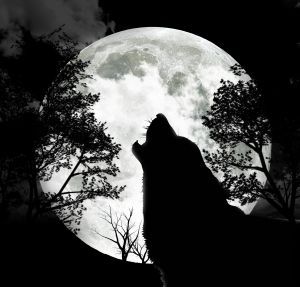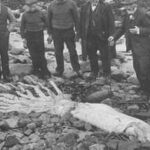In July of 1764, a fourteen-year-old girl in the south of France made sad history by being the first human victim of a mysterious creature (or creatures) that came to be known as the Beast of Gévaudan. To this day, no one knows what killed or wounded over a hundred people in southern France across the next three years.
Note: Although the stories of the Beast of Gévaudan sometimes contradict each other, and the Beast is more the subject of cryptozoology than of serious history, something happened in the forests of southern France two centuries ago, and no one yet knows what.
The Beast of Gévaudan: The Terror Begins
From the first attack through September of 1764, about one death a week was attributed to the Beast throughout the forests of Gévaudan. Rumors spread, doors were locked, and people huddled by their fires at night.
The beast was a wolf; of that everyone was sure. Particularly unnerving, however, was that unlike other wolves, it preferred human prey to cattle, as if the mysterious carnivore had a distinct taste for human flesh.
It was a wolf, but it was large as a bull. It had a wolf’s claws and teeth, but it also had a devil’s horns. There were all manner of distinct markings in the fur, although it seems unlikely that one could have mistaken the Beast of Gévaudan for anything else.
There was just one problem: no one who had had a close encounter with the Beast had lived to tell about it. Of course, everyone knew someone whose uncle had been talking with a soldier in tavern in the next town, oh, some town, whose sister had definitely seen the Beast, this creature from some other world, this demon.
The military patrolled the woods, and toward the end of September, all was quiet. But on the first day of October, the killings resumed. Since most of the victims had been women and children, the provincial governor prohibited unaccompanied women and children from working in the fields.
A serious wolf hunt was undertaken, and wolves were killed, but the Beast of Gévaudan continued in its bloody ways. There were victims of whom so little remained that priests refused to conduct a funeral.
The Beast of Gévaudan: The Ongoing Terror
In January 1765, it was reported that the Beast set upon a group of people, who wounded it and drove it away. But the killings continued.
The Beast of Gévaudan was again wounded after some twenty thousand men hunted it. Despite a storm of bullets, many of which were said to have reached their target, the next day, the Beast killed again. The church deemed the Beast a punishment sent by God to the people of Gévaudan.
Eight people were killed in March. On one otherwise fair day in the month of May, four people lost their lives to the Beast, which seemed to have lost any fear of human beings, as it was seen in the towns at night, walking on its hind legs, as if it were… the people shuddered… a werewolf.
Not just possibly a werewolf, but definitely a werewolf: there was a man who lived alone in the forest, so he must have been a werewolf. Captured and questioned, he attacked his unlucky questioner, howling like… Well, he was howling as he was thrown into prison.
Special wolf-hunters with their dogs came from Paris and actually killed a wolf, but the Beast of Gévaudan continued to kill.
The Beast of Gévaudan: The Final Year of Terror
The chronicles recount ongoing attempts to kill the Beast of Gévaudan, ongoing killings attributed to the Beast. Most of the victims were children, who, according to modern scientific investigation (here) are the most likely victims of wolf attacks.
On June 19, 1767, hunters continued the pursuit, Jean Chastel (the father of the supposed werewolf, by the way) among them. Various chroniclers have confused the reports of exactly what happened, but what matters is that Chastel killed an enormous wolf-like creature. Whether he did so after saying prayers, as some stories recount, or whether he could in fact only kill the animal with a silver bullet is not known.
What the beast he killed was is not known. Chastel packed it and set out to take it to the king, but it was summer in southern France, and there was no refrigeration. The box was buried hastily, with no one choosing to examine the contents.
The Beast of Gévaudan: The Legacy of the Terror
No more killings were attributed to the Beast of Gévaudan after June 19, 1767. Was the beast a werewolf? The supposed werewolf lived out his life in whatever peace he could find. Was the Beast perhaps a giant wolf-dog mix? Some scholars propose that it was. Was the Beast of Gévaudan a punishment from God?
No one has ever determined precisely how many deaths could be blamed on the Beast, but some claims exceed two hundred.
Wolves in France were apparently driven to extinction by 1927, but in recent years, they have crossed the Italian border to re-establish themselves in southern France (source).
Reports of wolf-like attacks similar to those of the Beast of Gévaudan (remembered in a splendid multi-lingual website here) were reported in France into the twentieth century.
If you enjoyed this article about a mysterious wolf-like creature in France, you might like to read about the legendary big cats of England in “The Beast of Bodmin Moor” (here) or about real animals in “The Wild Monkeys of Central Florida” (here). In fact, I have an index of articles about animals real and legendary, living in my house or extinct here.
Update: About two months after I originally posted this article, the History Channel aired a fascinating documentary, The Real Wolf-Man. They came up with some new ideas and a startling conclusion (more).





